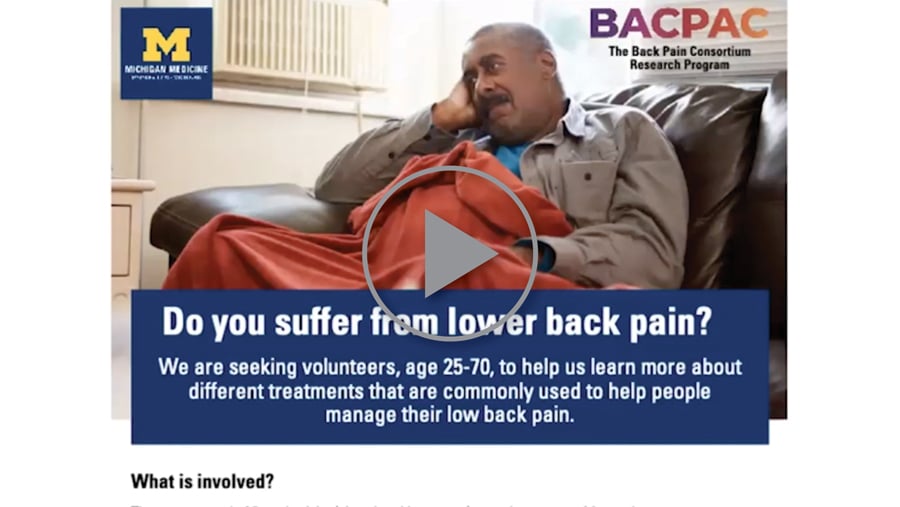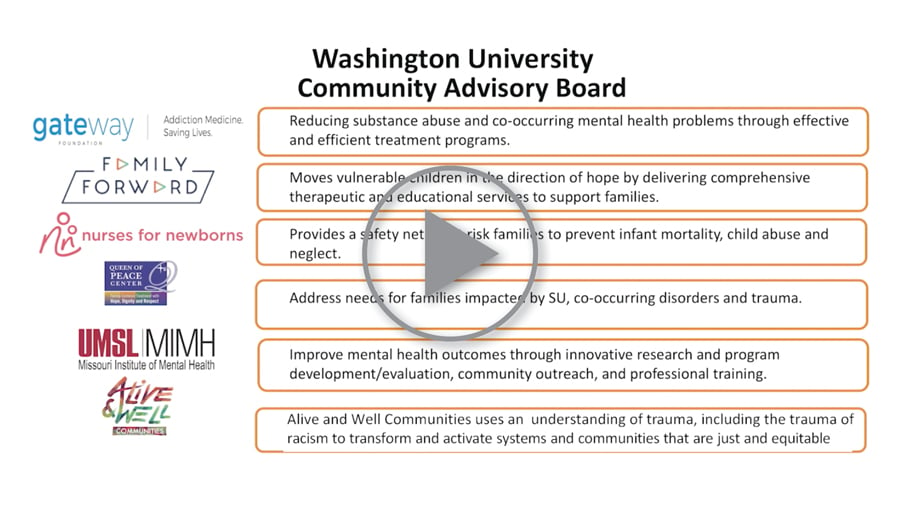“Understanding the patient experience is absolutely necessary – we see things in a way that is a little different from scientists.”
Speaking at a HEAL workshop last year, Dawn Edwards gave firsthand accounts about the value of meaningful interactions between patients and research teams. A kidney transplant recipient and once distrustful of research and researchers, Edwards is now an active patient advocate for research and a member of the HEAL Community Partner Committee.
HEAL prioritizes valuing the perspectives of patients and communities (often called engagement) in research. Scientific solutions for complex conditions like opioid use disorder and pain cannot be effective without knowing if, how, and how well they will work in real people with these conditions. Connecting with affected individuals is also important for choosing meaningful research outcomes – for example, looking for effects of a treatment on how pain affects daily function and life satisfaction.
But just because HEAL values patient engagement as an essential research component, many scientists are unfamiliar with how to do it. At the Third Annual NIH HEAL Initiative Investigator Meeting, two research teams shared lessons learned for how to solicit and incorporate input from patients and communities.

Listen to a brief talk (12 min.) about effective patient and community engagement by Afton Hassett, Psy.D., of the HEAL-funded BACPAC research team.
Building Trust
For years, federal regulations have guarded clinical research with human participants to keep people safe. But beyond those important policies is the need for people-centered strategies that can transcend barriers like mistrust of science and healthcare that stem from longstanding discrimination affecting some populations more than others. Successful approaches used by HEAL research teams include making research participation less intimidating and more user-friendly.
Community members in Ann Arbor, Michigan, are working with HEAL scientists to ground research in reality – which benefits participants and promotes high-quality science. Based on community feedback, the HEAL-funded Back Pain Consortium (BACPAC) team (which is conducting the Biomarkers for Evaluating Spine Treatments clinical trial) adopted several approaches:
- Being open on weekends and in locations beyond university hospitals or clinics
- Providing transportation to study locations
- Partnering with community members to create friendly environments for interaction and discussion between researchers and community members
- Assembling community advisory boards after first conducting community focus groups on how to do it
Responsive to local voices, the BACPAC team created two positions, each staffed by a community member: a Community Research Facilitator and a Recruitment Liaison. The Community Research Facilitator, who does not interact directly with researchers, acts as a “buffer” zone between researchers and participants. This individual is tasked with making connections and establishing trust and focuses on general community education and outreach (such as through social media and gatherings). The BACPAC Recruitment Liaison, in contrast, focuses more specifically on recruitment efforts related to individual studies. This individual provides information about specific studies (such as at health fairs or community events), addresses participation-related concerns, evaluates eligibility for participation, and handles study enrollment.
Of course, keeping lines of communication open is an obvious way to build trust and encourage interactions between researchers and participants. General strategies include providing study updates through a newsletter or basic acts of kindness like sending birthday cards.

Listen to a brief talk (16 min.) about effective patient and community engagement by Cynthia Rogers, M.D., of the HEAL-funded HBCD research team.
Embedding Equity
Although few would argue the importance of respect, inclusion, and equity within research, making it happen requires work and resources. Toward sustaining its investment in community engagement, the HEAL BACPAC team created a Health Equity Core, to infuse community engagement and principles of diversity, equity, and inclusion into all its future research efforts.
The nationwide HEALthy Brain and Child Development (HBCD) study is using a similar approach. This research is helping to address the lack of understanding of how opioid exposure during pregnancy affects a child’s long-term development and health, including vulnerability to drug use and addiction later in life. The HBCD research team created a dedicated Diversity, Equity, and Inclusion (DEI) Coordinating Committee that is active across all study sites. The group is tasked with ensuring patient and community engagement and inclusion across all facets of the study. At its core is a DEI Values Statement that guides the study’s activities and is shared with all researchers and participants to emphasize its importance to the research effort. Importantly, the committee holds researchers accountable by monitoring progress and benchmarks (including participant feedback).
Like the BACPAC study, the HBCD team relies on input from Community Advisory Boards made up of community members that meet regularly and serve a range of functions. Among other tasks, these groups create links to community agencies that provide services relevant to the needs of research participants and make sure that clinical trial procedures (called protocols) are patient-friendly and community-centered.
For this research, a board might include nurse home-visiting providers, peer recovery coaches, substance use educators and treatment providers, family trauma treatment and community advocate organizations, social services representatives, and people with lived experience. The HBCD boards were established far in advance – before scientists submitted their plans for the study.
Use of peer navigators is another key strategy being used by several HEAL projects, including the HBCD study. Along with community health workers and social workers that are part of the study, these individuals working as part of the HBCD research team act as a personal support system for women participating in the study, including those struggling with or in early recovery from substance use.
Making Engagement Real
Ideally, patient and community engagement efforts are budgeted into research studies from the earliest planning stages, earmarking such expenses as salaries for staff dedicated to community outreach and patient recruitment and stipends for Community Advisory Board members.
But beyond financial support, credit is also important. Efforts, and impact, of Community Advisory Boards need to be acknowledged through co-authorship on research publications and public attribution during presentations to both research and community audiences.
Several HEAL researchers are currently using creative strategies to conduct patient engagement. Other examples include the HEALing Communities Study, which has conducted several communications campaigns to dismantle stigma about opioid use disorder and treatment. Free, creatively produced “Take Action” products resonate with specific communities because they were developed in partnership with them.
In the HEAL-funded Hemodialysis Opioid Prescription Effort (HOPE) study, patients like Dawn Edwards have designed materials for recruitment, participated in the writing of informed consent documents, and designed and participated in introductory videos that can be used to present the study to potential participants. In the newly funded Integrative Management of chronic Pain and OUD for Whole Recovery (IMPOWR) research program, all research teams must include people with lived experience who bring critical insights to research teams to shape the science even before research gets underway.
To sustain its commitment to meaningful patient and community engagement, HEAL is reviewing the level of engagement among its research community, including scientists conducting basic and translational research for whom understanding patient experiences can guide discovery efforts. Building on these approaches, the initiative may develop training resources for researchers at various levels of the research continuum, as well as derive other methods to enhance patient and community engagement across the HEAL research portfolio.
Increasing Participant Diversity, Inclusion, and Engagement in HEAL Research
The NIH HEAL Initiative is providing funding to address challenges related to meaningful engagement of populations experiencing pain and opioid use disorder in HEAL clinical studies.
Patient Engagement Virtual Workshop
Read about and watch recordings from HEAL's Patient Engagement Virtual Workshop—Harnessing the Power of Patients and Stakeholders to Advance the Research Goals of the NIH HEAL Initiative.
Patient and Community Engagement
The NIH HEAL Initiative® views engagement with people with lived experience throughout the research process as a fundamental value.
 U.S. Department of Health & Human Services
U.S. Department of Health & Human Services
